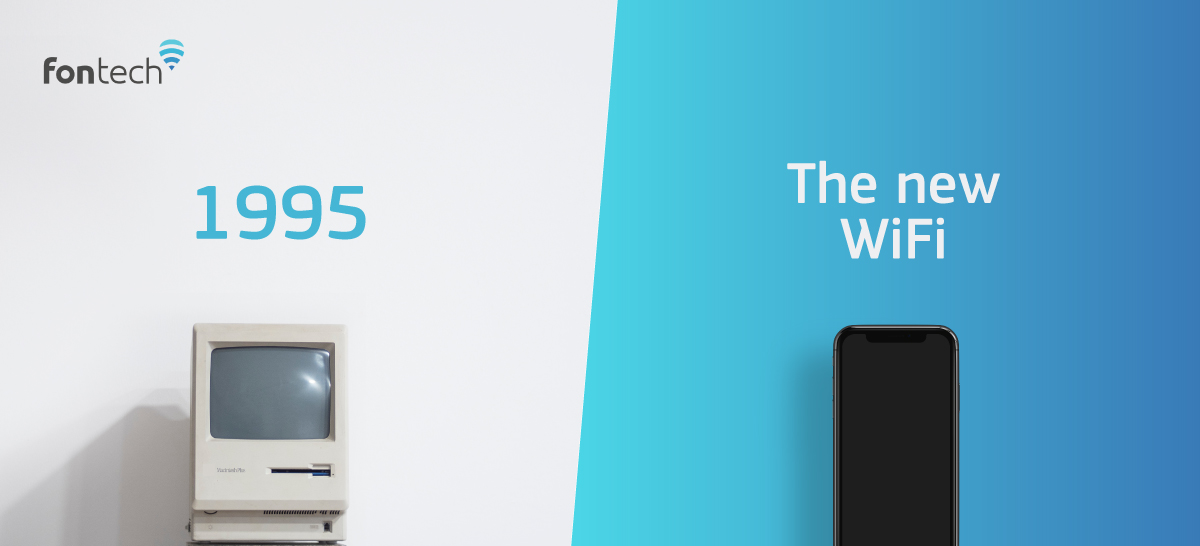The new WiFi
Since the beginning of WiFi networks and the appearance of the 802.11 standards around 1995, there have been rumors regarding possible security-related issues. With the intention of making user and guest access to these networks more secure, different encryption mechanisms have been developed, from early WEP to WPA2-TKIP. WPA3 is now on the horizon. Each of these protocols has brought new and improved levels of security for our collective piece of mind. The continuous evolution of the standard until 802.11ax, which has almost arrived, has met the requirements and needs of traffic-hungry millennials.

The appearance of “digital natives” has had a dramatic impact on the performance and reliability of WiFi networks. Traffic per user on current devices (access points, smartphones, etc.) has multiplied by just over 1000x since the first WiFi device when trying to accomplish speeds over 1Mbps was just science fiction. But it’s not just this “need for speed” that we must know how to manage, something that multiple hardware vendors in the market are already solving. Granting secure and controlled access to the infinite number of new “clients” that have appeared on the scene is of prime importance.
Coming from our old friends, the PCI & PCMCIA cards, to the new wireless sensors starting to show up in the emerging IoT universe, the list is just endless. On top of this, new services (traceability and location, Big Data analysis, mobility, access, and monetization) create new access security challenges for the networks that surround us more and more each day. And even more so given the tendency to manage both wired and wireless networks from a single point (albeit hardware or software).

With the appearance of captive portals that require a user to identify himself in order to gain access to the WiFi network, whether it is a public or private corporate network, the action of typing in a username and password has become a daily task for almost all of us regular WiFi users. Nevertheless, after few years of using this authentication-authorization mechanism, some critical problems have arisen. These have mostly been caused by the exponential growth of the number of devices per user. The certificates could be resolved much more efficiently using a certificate platform or PKI.
The use of certificates to control all these new “guests” would help solve network administrator’s biggest headache of managing access, which can be extremely time-consuming. Certificates are allocated unequivocally to the users (no matter how many devices they use), reducing the time cost associated with authentication or re-authentication when a user may need access to the network again. This gives administrators almost total control.
All this taken into account, the best solution would most probably:
– Be a hardware-agnostic RADIUS-based platform that can be integrated with the final customer users database (Active Directory, G-Suite, Office 365, etc)
– Feature a PKI (Public Key Infrastructure) to endure the distribution and identification of encrypted public keys (maybe generating ad-hoc configurations per device or per operating system type with an internal security policy engine)
– Include a very easy, customizable captive portal (for both final user and system integrator) and be compatible with social login (Facebook, Instagram, etc.)
– Be capable of identifying devices and or people within a closed environment (ensuring GDPR compliance) and allow administrators to run highly segmented marketing campaigns (based on WiFi users’ data)
– Facilitate the generation of reports on demand and allow for a wide variety of monetization models accelerating the ROI.
Overall, an ideal solution would be cutting-edge whilst allowing the simple and secure management of user and guest access to a WiFi network.
There are lots of exciting changes on the horizon: Speeds over 7Gbps are being promised, new frequency bands and new access points with embedded 5G capabilities … all this signals that we are close to a new telecommunications revolution. The question is… Are you ready to manage all this? Because you are going to need to!
What if… This can already be done? Maybe it is time to think about it?
This is something that we can help you with at Fontech! If you’re interested in finding out more about our innovative WiFi solutions just get in touch! And make sure to follow us on Twitter and LinkedIn to keep up to date with the latest trends and opportunities, as well as corporate news.


